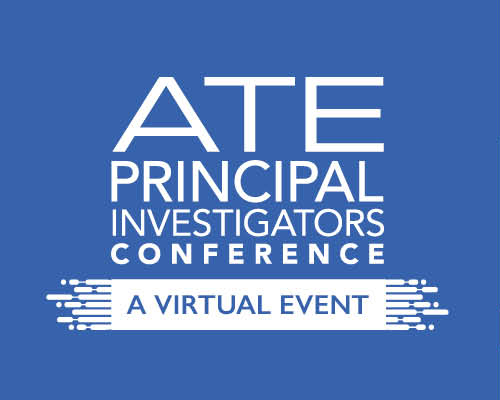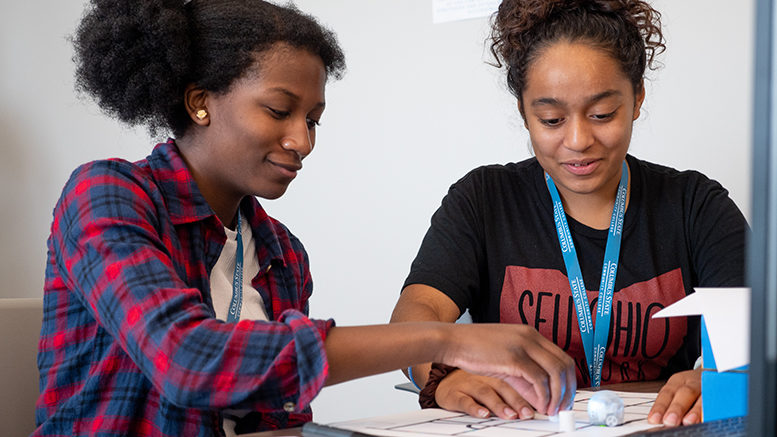Grants from the National Science Foundation’s Advanced Technological Education (ATE) program not only help faculty test their ideas for innovative STEM technician programs, but they are also a funding source that helps community colleges become “risk-tolerant.”

Kevin Cooper, principal investigator of Project Vision, made the case that risk tolerance can help community colleges find opportunities even amid crises like COVID-19. Project Vision is a National Science Foundation-funded initiative that helps community college leaders match their ideas with the funding opportunities offered by the federal science agency. These conversations will be continued in a special three-part series via Zoom hosted by ATE Central in partnership with the American Association of Community Colleges (AACC) at 1 p.m. (EST) on November 17, February 17 and April 21.
Building grant-seeking cultures
During the interactive virtual workshop that Cooper moderated Monday during this week’s 2020 Virtual ATE Principal Investigators Conference, three featured speakers and several community college presidents among the 48 participants shared their effective practices for developing the infrastructure for grants that align with institutions’ strategic plans.
Early in their college presidencies David Harrison and Annette Parker took bold steps to build grant-seeking cultures on their campuses.
Harrison engaged Columbus State Community College (Ohio) faculty and employers in discussions about grants and how they could support the college’s strategic plan. He also expanded the grants office staff — something he called “a little bit of a bet” — to make it as easy as possible for faculty to obtain and manage grants.
In the past 10 years, Columbus State has gone from zero ATE grants to 15, and it has obtained dozens of other grants from various sources. Harrison, who was an ATE principal investigator early in his career, said the success of Columbus State’s first ATE advanced manufacturing grant “really started a very positive snowball effect” that led to deeper partnerships with employers.
Mirroring what works
At South Central College (Minnesota), Parker took a charter bus filled with faculty and employers to see the facilities at Gateway Technical College (Wisconsin) and encouraged conversations about workforce expectations during the next five years. This collaboration helped the college obtain several grants focused on apprenticeships, which have generated new employer partnerships and support. Parker added a grants office, too.
Parker also offered this advice to administrators at colleges that have not yet received an ATE grant or other competitive NSF grant: “Hang in there. Don’t give up. Once you really master writing them, you will be like President Harrison there and have many successes.”
Before she became South Central’s president, Parker was principal investigator of the Automotive Manufacturing Technical Education Collaborative. She explained that the team for the Kentucky Community and Technical College System applied for center funding three times before it was successful.
Crucial one-on-one support
Scott Alsobrooks, president of East Mississippi Community College (EMCC), explained that advice from Elizabeth Teles, then an NSF program director, helped him prepare a successful ATE grant proposal in 2005. He met Teles at a grant-writing workshop where he described his idea for a two-year degree program for electrical line workers that would teach courses in intense two-week segments.
At the time, Alsobrooks was a professor at Pearl River Community College (Mississippi) trying to respond to utility companies’ workforce needs and the devastation from Hurricane Katrina. His Electrical Distribution Technician Training System (EDTTS) project was successful, and Pearl River Community College continues to offer the lineman degree program.
“I could not have done it without Dr. Teles,” he said.
Recently, Alsobrooks and faculty from EMCC worked with Project Vision to submit an ATE grant proposal.
In addition to the capacity building that Project Vision offers, Rassoul Dastmozd, co-principal investigator of Project Vision, directed people’s attention to other ATE initiatives that provide mentoring and grant development support. These include MentorLinks, a project led by AACC; Mentor-Connect, based at Florence-Darlington Technical College (South Carolina); and Mentor Up.





